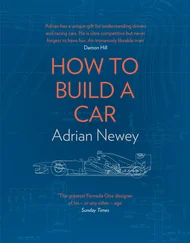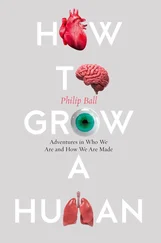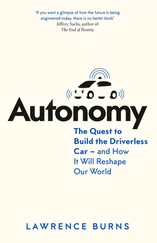Eyal, Nir - Hooked - How to Build Habit-Forming Products
Здесь есть возможность читать онлайн «Eyal, Nir - Hooked - How to Build Habit-Forming Products» весь текст электронной книги совершенно бесплатно (целиком полную версию без сокращений). В некоторых случаях можно слушать аудио, скачать через торрент в формате fb2 и присутствует краткое содержание. Год выпуска: 2014, Издательство: Nir Eyal, Жанр: Старинная литература, на английском языке. Описание произведения, (предисловие) а так же отзывы посетителей доступны на портале библиотеки ЛибКат.
- Название:Hooked: How to Build Habit-Forming Products
- Автор:
- Издательство:Nir Eyal
- Жанр:
- Год:2014
- ISBN:нет данных
- Рейтинг книги:5 / 5. Голосов: 1
-
Избранное:Добавить в избранное
- Отзывы:
-
Ваша оценка:
- 100
- 1
- 2
- 3
- 4
- 5
Hooked: How to Build Habit-Forming Products: краткое содержание, описание и аннотация
Предлагаем к чтению аннотацию, описание, краткое содержание или предисловие (зависит от того, что написал сам автор книги «Hooked: How to Build Habit-Forming Products»). Если вы не нашли необходимую информацию о книге — напишите в комментариях, мы постараемся отыскать её.
Hooked: How to Build Habit-Forming Products — читать онлайн бесплатно полную книгу (весь текст) целиком
Ниже представлен текст книги, разбитый по страницам. Система сохранения места последней прочитанной страницы, позволяет с удобством читать онлайн бесплатно книгу «Hooked: How to Build Habit-Forming Products», без необходимости каждый раз заново искать на чём Вы остановились. Поставьте закладку, и сможете в любой момент перейти на страницу, на которой закончили чтение.
Интервал:
Закладка:
By running on two feet and bereft of the body hair typical of other primates, our species gained a massive advantage over larger mammals. Our ability to maintain steady pursuit gave us the capacity to hunt large prehistoric game. But persistence hunting was not only made possible because of our bodies; changes in our brains also played a significant role.
During the chase, the runner is driven by the pursuit itself; and this same mental hardwiring also provides clues into the source of our insatiable desires today. The dogged determination that keeps San hunters chasing kudu is the same mechanism that keeps us wanting and buying. Although it is a long way from bushmen to businessmen, the mental processes of the hunt remain largely the same.
The search for resources defines the next type of variable reward — the rewards of hunt. The need to acquire physical objects, such as food and other supplies that aid our survival, is part of our brain’s operating system. But where we once hunted for food, today we hunt for other things. In modern society, food can be bought with cash, and more recently by extension, information translates into money.
Rewards of the hunt existed long before the advent of computers. But today we find numerous examples of variable rewards associated with the pursuit of resources and information that compel us with the same determination as the San hunter chasing his prey.
Here are a few examples of products that create habits by leveraging rewards of the hunt:
Machine Gambling
Most people know that gambling benefits the casino or broker far more than the players. As the old adage says, “the house always wins.” Yet despite this knowledge, the multi-billion dollar gambling industry continues to thrive.
Slot machines provide a classic example of variable rewards of the hunt. Gamblers plunk $1 billion per day into slot machines in American casinos, which is a testament to the machines’ power to compel players. [lxxxiv]By awarding money in random intervals, games of chance entice players with the prospect of a jackpot. Of course, winning is entirely outside the gambler’s control — yet the pursuit can be intoxicating.
The “feed” has become a social staple of many online products. The stream of limitless information displayed in a scrolling interface makes for a compelling reward of the hunt. The Twitter timeline, for example, is filled with a mix of both mundane and relevant content. This variety creates an enticingly unpredictable user experience. On occasion a user might find a particularly interesting piece of news, while other times, she won’t. But to keep hunting for more information, all that is needed is a flick of the finger or scroll of a mouse. Users scroll and scroll and scroll to search for variable rewards in the form of relevant tweets (figure 24).

Figure 24
Pinterest, a company that has grown to reach over 50 million monthly users worldwide, also employs a feed, but with a visual twist. [lxxxv]The online pinboarding site is a virtual smorgasbord of objects of desire. The site is curated by its community of users who ensure that a high degree of intriguing content appears on each page.
Pinterest users never know what they will find on the site. To keep them searching and scrolling, the company employs an unusual design. As the user scrolls to the bottom of the page, some images appear to be cut-off. Often, images appear out of view below the browser fold. However, these images offer a glimpse of what's ahead, even if just barely visible. To relieve their curiosity, all users have to do is scroll to reveal the full picture (figure 25). As more images load on the page, the endless search for variable rewards of the hunt continues.

Figure 25
Rewards of the Self
Finally, there are the variable rewards we seek for a more personal form of gratification. We are driven to conquer obstacles, even if just for the satisfaction of doing so. Pursuing a task to completion can influence people to continue all sorts of behaviors. [lxxxvi]Surprisingly, we even pursue these rewards when we don’t outwardly appear to enjoy them. For example, watching someone investing countless hours into completing a tabletop puzzle can reveal frustrated face contortions and even sounds of muttered profanity. Although puzzles offer no prize other than the satisfaction of completion, for some the painstaking search for the right pieces can be a wonderfully mesmerizing struggle.
The rewards of the self are fueled by “intrinsic motivation” as highlighted by the work of Edward Deci and Richard Ryan. [lxxxvii]Their self-determination theory espouses that people desire, among other things, to gain a sense of competency. Adding an element of mystery to this goal makes the pursuit all the more enticing.
The experiences below offer examples of variable rewards of the self:
Video Games
Rewards of the self are a defining component in video games, as players seek to master the skills needed to pursue their quest. Leveling up, unlocking special powers, and other game mechanics fulfill a player's desire for competency by showing progression and completion.
For example, advancing a character through the popular online game World of Warcraft unlocks new abilities for the player (figure 26 ) . The thirst to acquire advanced weaponry, visit uncharted lands, and improve their characters’ scores motivates players to invest more hours in the game.

Figure 26
You do not have to be a hard-core video gamer to be heavily influenced by game-like experiences. The humble email system provides an example of how the search for mastery, completion, and competence moves users to habitual, sometimes mindless, actions. Have you ever caught yourself checking your email for no particular reason? Perhaps you unconsciously decided to open it to see what messages might be waiting for you. For many, the number of unread messages represents a sort of goal to be completed.
But to feel rewarded, the user must have a sense of accomplishment. Mailbox, an email application acquired by Dropbox in 2013 for a rumored $100 million, aims to solve the frustration of fighting what feels like a losing inbox battle. [lxxxviii]Mailbox cleverly segments emails into sorted folders to increase the frequency of users achieving “inbox zero” — a near-mystical state of having no unread emails (figure 27 ) . Of course, some of the folder sorting is done through digital sleight-of-hand by pushing some low priority emails out of sight, and then having them reappear at a later date. But by giving users the sense that they are processing their inbox more efficiently, Mailbox delivers something other email clients do not — a feeling of completion and mastery.

Figure 27
Codecademy
Learning to program is not easy. Software engineers take months, if not years, of diligent hard work before they have the confidence and skill to write useful code. Many people attempt to learn how to write software, only to give up, frustrated at the tedious process of learning a new computer language.
Читать дальшеИнтервал:
Закладка:
Похожие книги на «Hooked: How to Build Habit-Forming Products»
Представляем Вашему вниманию похожие книги на «Hooked: How to Build Habit-Forming Products» списком для выбора. Мы отобрали схожую по названию и смыслу литературу в надежде предоставить читателям больше вариантов отыскать новые, интересные, ещё непрочитанные произведения.
Обсуждение, отзывы о книге «Hooked: How to Build Habit-Forming Products» и просто собственные мнения читателей. Оставьте ваши комментарии, напишите, что Вы думаете о произведении, его смысле или главных героях. Укажите что конкретно понравилось, а что нет, и почему Вы так считаете.












